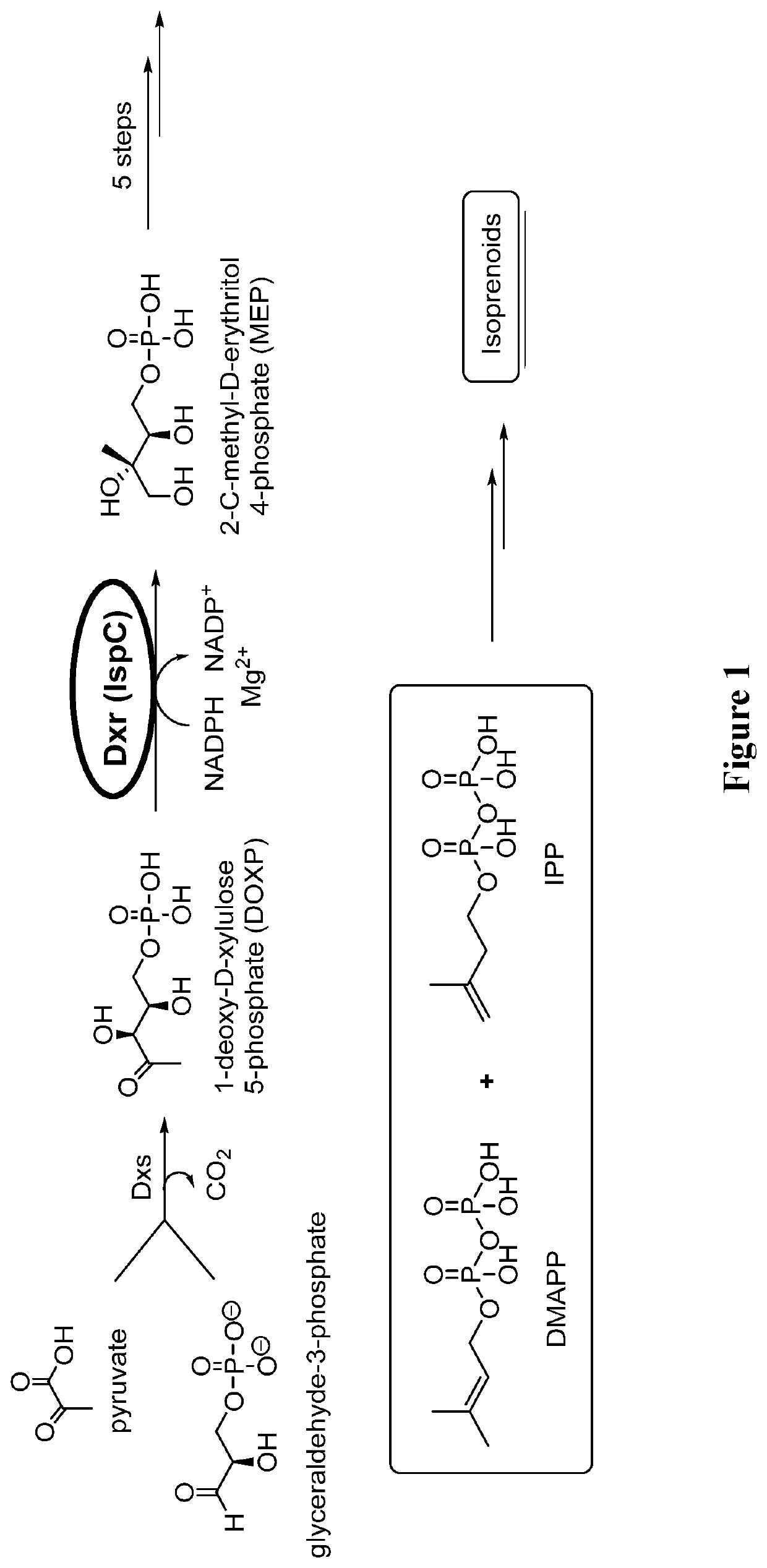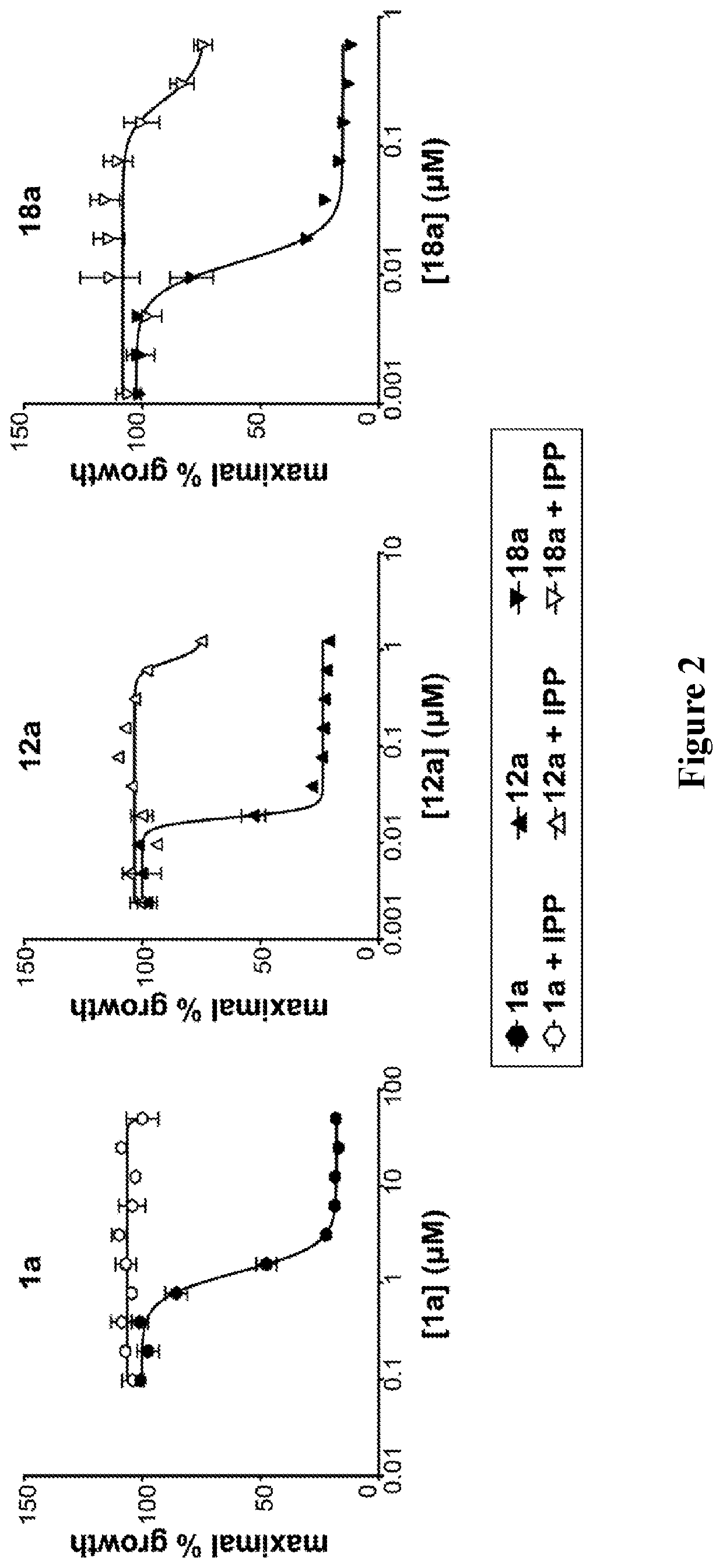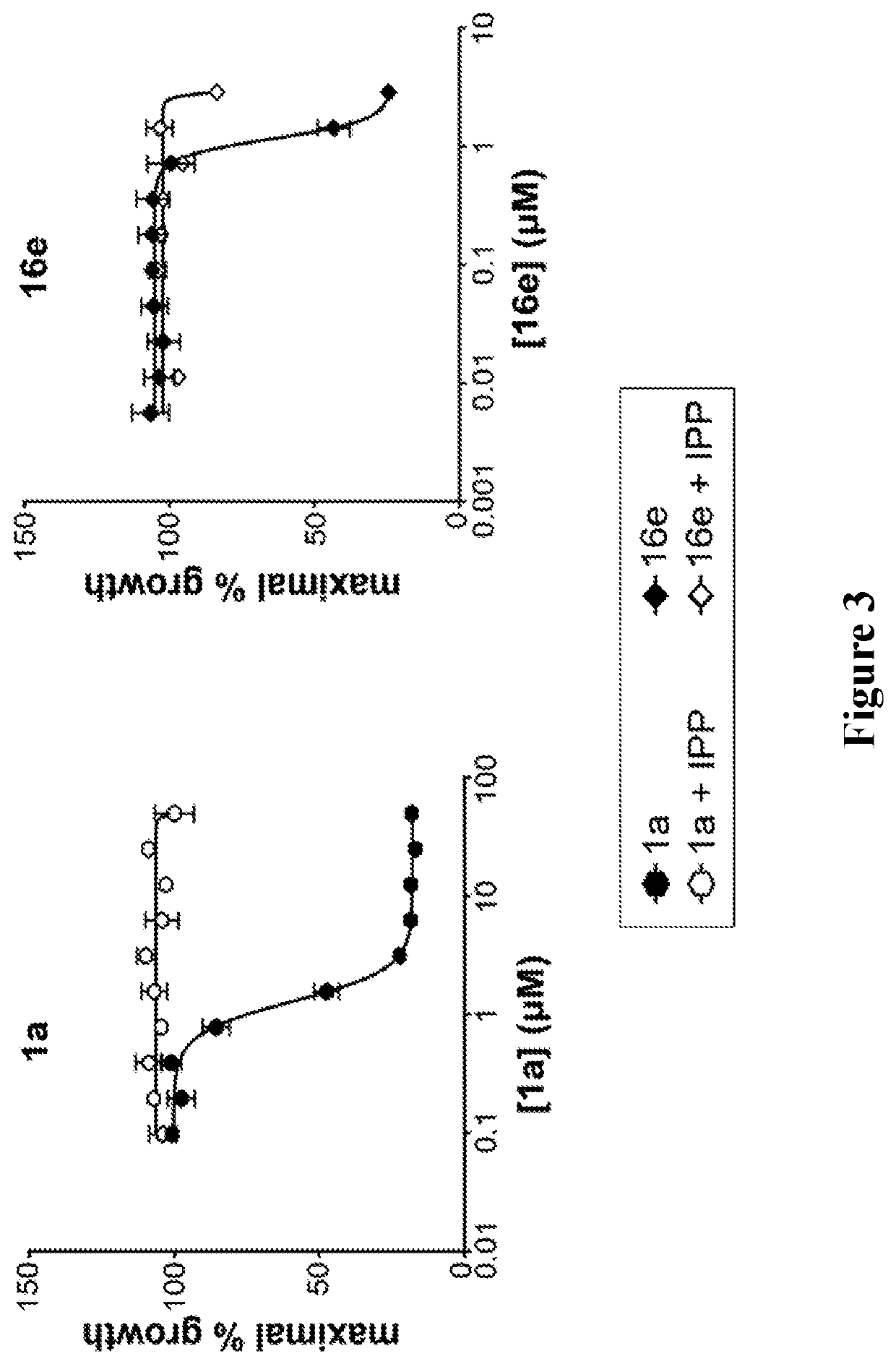Alkenyl and beta-substituted phosphonates as antimicrobial agents
a technology of beta-substituted phosphonates and alkenyl phosphonates, which is applied in the field of alkenyl beta-substituted phosphonates as antimicrobial agents, can solve the problems of severely limited existing therapies, threats to global malaria control efforts, and a formidable challenge to public health
- Summary
- Abstract
- Description
- Claims
- Application Information
AI Technical Summary
Problems solved by technology
Method used
Image
Examples
example 1
[0125]N-acyl analogs 12a-c were prepared in 7 steps from commercially available starting materials shown in Scheme 4. First, allyl phosphonate 6 was synthesized from triethylphosphite and allyl bromide via a Michaelis-Arbuzov reaction. Subsequent addition of bromine to compound 6 resulted in production of dibromide 7. O-Benzylhydroxylamine hydrochloride was neutralized in situ and protected using di-tert-butyldicarbonate to yield Boc-protected 8, which was then reacted with compound 7 and two equivalents of NaH to prepare compound 9. The first equivalent of NaH deprotonated 8 and generated a nucleophile to attack the primary bromide of compound 7. The second equivalent of NaH was used to eliminate the β-bromide to furnish α,β-unsaturated phosphonate 9. Under acidic conditions, compound 9 was hydrolyzed and generated the deprotected amine in situ that acted as a building block to be acylated with an acyl chloride or anhydride to synthesize N-acyl intermediates 10b-c. For compound 10a...
example 2
l Evaluation
Evaluation of 12a-c, 16d-g as DXR inhibitors.
[0135]The phosphonic acid salts were evaluated as inhibitors of DXR from P. falciparum, and the results are shown in Table 2. Initially, the percent remaining enzyme activity was measured by treating the enzyme with each compound at a single concentration of 100 μM. This data shows the intrinsic activity of the compounds. Half-maximal inhibitory concentrations (IC50 values) were determined for compounds showing greater than 75% inhibition of DXR.
[0136]
TABLE 2Inhibition of P. falciparum DXR by phosphonic acid saltsPf DXRIC50 [μM]CompoundR1R2R3(% Residue) 2Na / HHCH3 0.018a12aNa / HHH0.09212bNa / HHCF3(36.96) 12cNH4HOCH314.45 16dNa / HCH(CH3)PhCH32.54 16eNa / HCH2(4-iprPh)CH32.11 16fNa / HCH2(2-naphthyl)CH3(25) 16gNa / HCH2(4-biphenyl)CH34.53 Pf = P. falciparum;IC50 = inhibitory concentration at 50%;aSee Gießmann et al., Chemistry & Biodiversity 2008, 5, 643-656.
[0137]Of the new compounds, the most potent P. falciparum DXR inhibitor is 12a ...
example 3
of α,β-unsaturated fosmidomycin analogs General
[0160]1H and 13C NMR spectra were recorded in CDCl3, CD3OD or D2O on Agilent spectrometer at 400 and 101 MHz, respectively, with TMS, H2O or solvent signal as internal standard. Chemical shifts are given in parts per million (ppm). Spin multiplicities are given with the following abbreviations: s (singlet), br s (broad singlet), d (doublet), dd (doublet of doublets), ddd (doublet of doublets of doublets), t (triplet), dt (doublet of triplets), ddt (doublet of doublet of triplets), q (quadruplet), qt (quintuplet), m (multiplet). Mass spectra were measured in the ESI mode on an HPLC-MS (Agilent 1100) or in the EI mode on an GC-MS (Shimadzu GCMS-QP2010S). Thin layer chromatography (TLC) was performed on Baker-flex Silica Gel IB2-F silica plates and flash column chromatography was carried out using SiliCycle SiliaFlash P60 silica gel (40-63 μm). All reagents were purchase from commercial suppliers and used without further purification. Anhy...
PUM
| Property | Measurement | Unit |
|---|---|---|
| time | aaaaa | aaaaa |
| concentration | aaaaa | aaaaa |
| UV detection wavelength | aaaaa | aaaaa |
Abstract
Description
Claims
Application Information
 Login to View More
Login to View More - R&D
- Intellectual Property
- Life Sciences
- Materials
- Tech Scout
- Unparalleled Data Quality
- Higher Quality Content
- 60% Fewer Hallucinations
Browse by: Latest US Patents, China's latest patents, Technical Efficacy Thesaurus, Application Domain, Technology Topic, Popular Technical Reports.
© 2025 PatSnap. All rights reserved.Legal|Privacy policy|Modern Slavery Act Transparency Statement|Sitemap|About US| Contact US: help@patsnap.com



